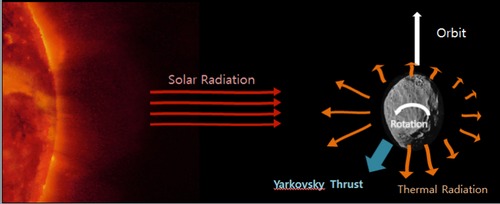Deflecting near Earth asteroids with paintby Shen Ge
|
| Apophis’s close approach in 2029 offers an excellent opportunity to explore and test the long-term effects of the mitigation technique without causing potential impact to the Earth. |
The design and implementation of the Surface Albedo Treatment System (SATS) is a three-step process. The first step is an initial study of three parts discussed in this article, called the Apophis Mitigation Technology (AMT). The second step is a low Earth orbit (LEO) flight test of a spacecraft housing the SATS system, with an anticipated launch date of 2018. The final step is an asteroid exploration and mitigation mission called the Apophis Exploration and Mitigation Platform (AEMP) to the NEA 99942 Apophis, with an anticipated launch in 2021 and arrival at Apophis in 2022.
Apophis was co-discovered by Roy Tucker, who is also a board member of SPACE. Apophis will approach close to the Earth in April 2029 and, if it passes through a region of space known as the keyhole, could impact Earth in 2036. When first discovered in December 2004, JPL estimated that there was a 1 in 300 probability of impact. Since then, follow-up observations have reduced the probability of impact to well below 1 in a million for the 2036 close encounter. With almost zero probability of hitting the Earth, Apophis’s close approach in 2029 offers an excellent opportunity to explore and test the long-term effects of the mitigation technique without causing potential impact to the Earth.
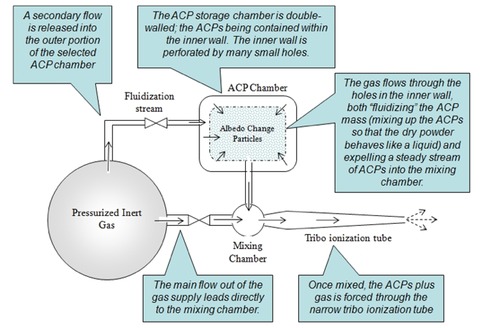 Figure 2. Schematic depiction of the triboelectric dispenser mechanism. |
Ground experiment
Over the last five years, we have designed the SATS payload, performed simulations, and conducted ground experiments. SATS is composed of four main components as shown in Figure 2: an inert gas chamber, an ACP (Albedo Change Particles) chamber, a mixing chamber, and a triboionization tube. The core design requires modifying a powder painting gun commonly used for industrial powder coating, which is commonly used for painting car rims, furniture, door knobs, and a variety of other terrestrial objects. A modified Nordson Corporation power painting tribodispenser is been developed for use in space.
SATS would work in space as follows:
- Pressurized inert gas forces power through a narrow passageway, where the dispenser wall material is an electric donor and the ACPs are electron acceptors.
- Dispenser releases the dry, negatively charged ACPs onto the positively charged asteroid surface.
- Solar radiation melts and cures the powder, bonding the particles firmly to each other and the surface.
Designing the SATS requires both ground experiments and particle flow and interspace simulations. The ground test differs from the LEO experiment by the presence of gravity and its smaller scale. Every effort is implemented to simulate space conditions, including vacuum and sunlight. A vacuum chamber has been built and an UV projector models sunlight. The apparatus is composed of a pressurized gas source, a fluidized bed (hopper), a hose connecting the hopper to the mixing chamber, a main ionization tube, and a nozzle. A schematic of the setup can be seen in Figure 3.
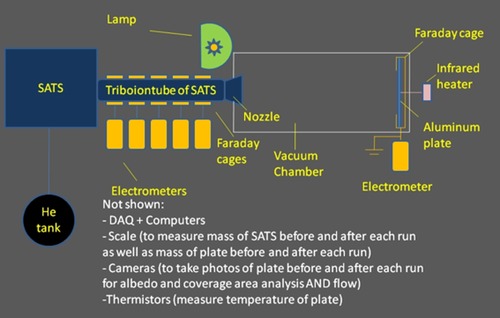 Figure 3. Schematic of the ground experiment for optimizing design of SATS. |
Simulations
The ACP Dynamic Simulator (ADS) makes use of a variety of target asteroids. By testing against a variety of targets, more likely scenarios can be weighted accordingly and limiting cases can be found. Particle flow within and near the dispenser are simulated via Monte Carlo techniques, combined with computational fluid dynamics of the transporting gas, and iterated upon to improve estimates of the charge distribution and its resulting force on the particles. Preliminary studies have yield promising results but there is still work in developing the user-defined functions for the flow characteristics.
| With the effectiveness of the trajectory change observed via the test mission to Apophis, the application method can then be applied to any NEAs given a sufficient warning time. |
The final simulation aims to observe the amount of change in trajectory altering produced by the Yarkovsky Effect. The code starts with 2D and 3D normal distribution of positions and velocities with mean and covariance values. The 6D sphere of uncertainty will be propagated from Apophis’s initial conditions to 2036 with Monte Carlo simulations.
LEO flight experiment
For our LEO flight experiment, we have designed a spacecraft to test the efficacy of albedo change. The tribo-dispenser will be mounted at the top of the spacecraft, with the barrel angled down towards the surface. The flow of the particles will spread out in a cone with a circular cross-section, finally curing and thus adhering to the surface. The particles will be stored in a spherical tank near the tribo-dispenser, with pressurant stored in a separate tank. Upon release, the negatively charged particles will be electrostatically attracted to the surface, where they will cure. Images taken during deposition and curing will be stored and forwarded to the ground station. A monochrome camera will provide the imagery; color imagery is unnecessary to measure the change in visible light intensity, as it increases the data load and decreases sensitivity. The sun will provide the light for imaging.
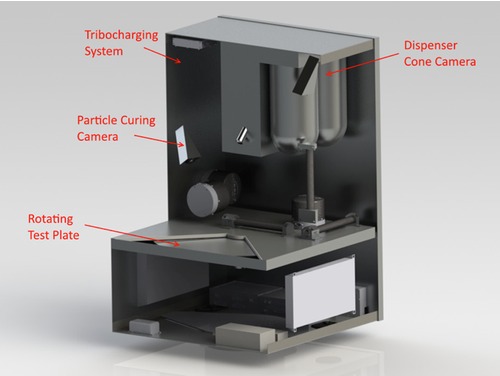 Figure 4. Refined configuration of the AMT spacecraft bus. |
The future
Our work currently paves the way for the next step of building the spacecraft for the LEO flight experiment and, ultimately, the ensuing AEMP mission to the asteroid Apophis. Our three-step progression provides many desirable characteristics for changing the trajectory of a potentially threatening asteroid. A tribodispenser design uses techniques that are commonly used and well understood. The paint can stay on the surface for an extended period, ensuring continuous trajectory change.
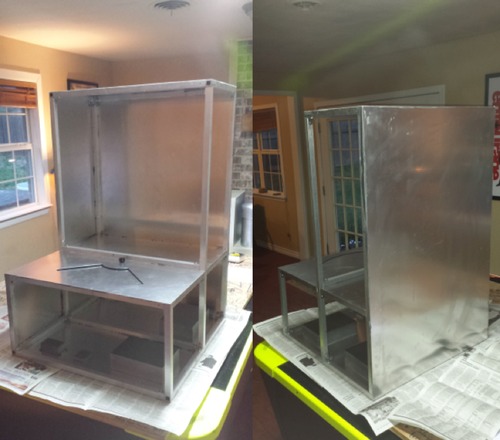 Figure 5. A mockup of the LEO spacecraft made from aluminum plates. |
With the effectiveness of the trajectory change observed via the test mission to Apophis, the application method can then be applied to any NEAs given a sufficient warning time. In the case of a certain impact and enough warning time, a mitigation mission using SATS can drastically reduce design time and mitigation cost.
